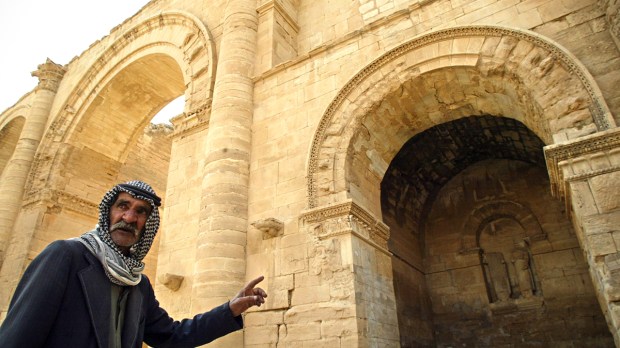Archaeologists in Iraq have made an unexpected discovery underneath the ruins of the Tomb of the Prophet Jonah, which was destroyed by ISIS in 2014: the 6th-century BC palace of Assyrian king Sennacherib.
After the Iraqi army recaptured the area near Mosul from ISIS last month, archaeologists came across the palace while assessing the damage done to what is thought to be the tomb of the Prophet Jonah. The 2,300-year-old palace was unearthed by ISIS, which had reportedly dug tunnels deep underneath the tomb, most probably to collect and sell artifacts on the black market.
While excavations were carried out in 1852 by the Ottoman governor of Mosul and in the 1950s by the Iraqi department of antiquities, they did not reach as far as the palace. Among the recent discoveries: a marble cuneiform inscription of King Esarhaddon, dating back to the Assyrian empire of 672 BC.
Professor Eleanor Robson, chair of the British Institute for the Study of Iraq, told The Telegraph, “There’s a huge amount of history down there, not just ornamental stones. It is an opportunity to finally map the treasure-house of the world’s first great empire, from the period of its greatest success.”
Iraqi archaeologist Layla Salih believes ISIS militants probably looted hundreds of valuable objects before Iraqi forces retook the area. “I can only imagine how much Daesh discovered down there before we got here,” she told the Telegraph. “We believe they took many of the artifacts, such as pottery and smaller pieces, away to sell. But what they left will be studied and will add a lot to our knowledge of the period,” she said.
King Sennacherib’s military campaign against the Kingdom of Judah is chronicled in the Bible:
“But after all this and all Hezekiah’s fidelity, there came Sennacherib, king of Assyria. He invaded Judah and besieged the fortified cities, intending to breach and take them.” – 2 Chronicles, Chapter 32:1
The palace, built for Sennacherib, was renovated and expanded by Esarhaddon (681-669 BC). It was partly destroyed after the of Sack of Nineveh in 612 BC, which led to the destruction of the Neo-Assyrian empire, and paved the way for the Neo-Babylonian empire.
The Prophet Jonah is revered in Jewish, Christian, and Muslim traditions, and there is speculation that the Islamic State militants blasted the tomb that bears his name with dynamite in order to expunge any elements of the Jewish or Christian traditions from the practice of Islam.

